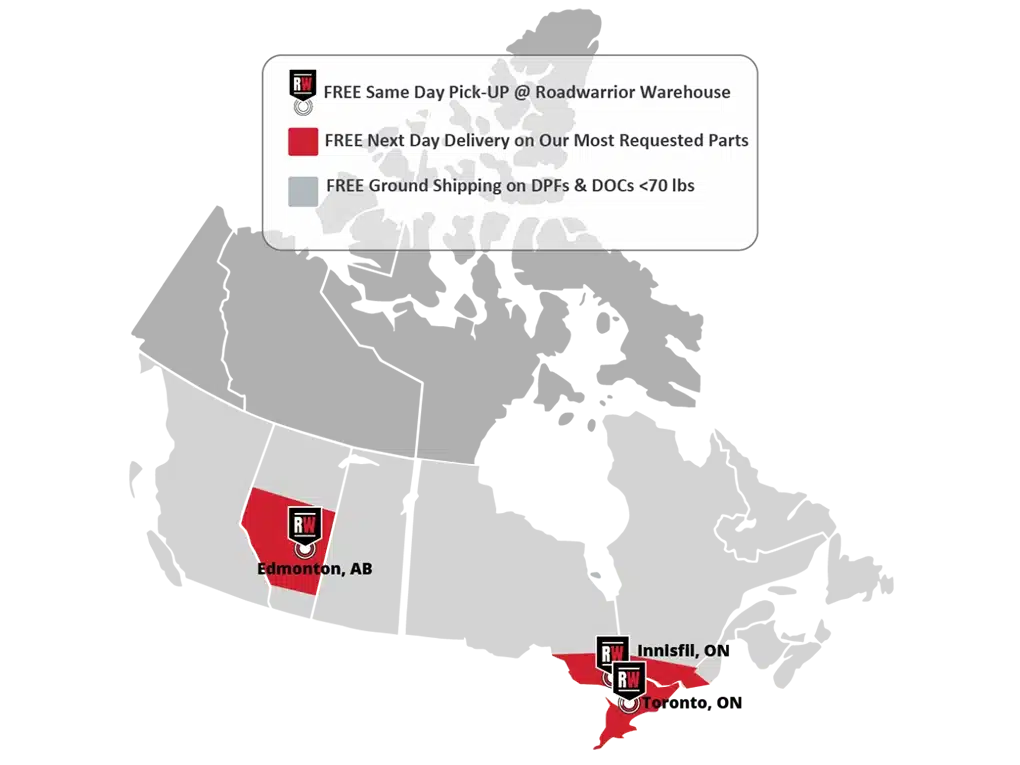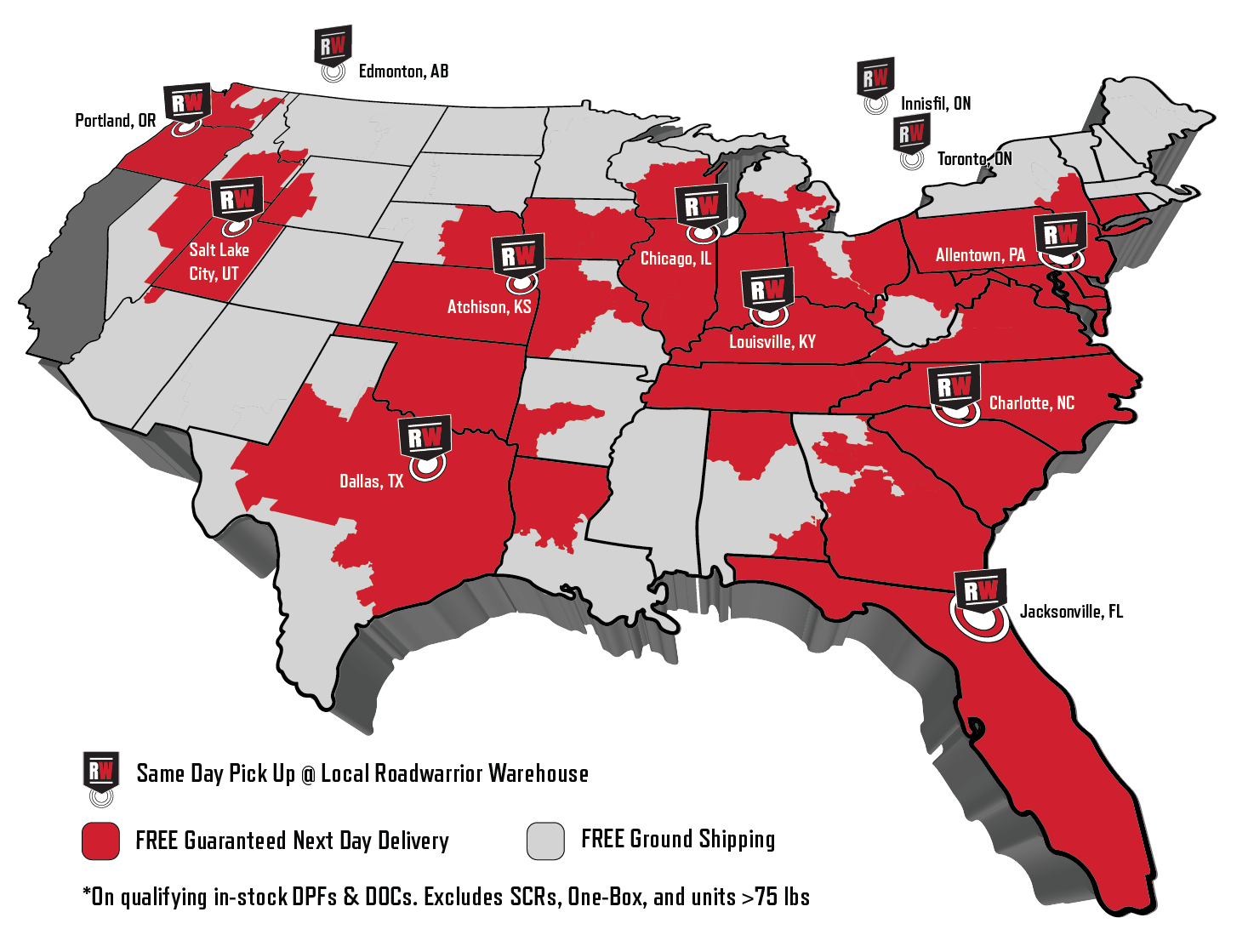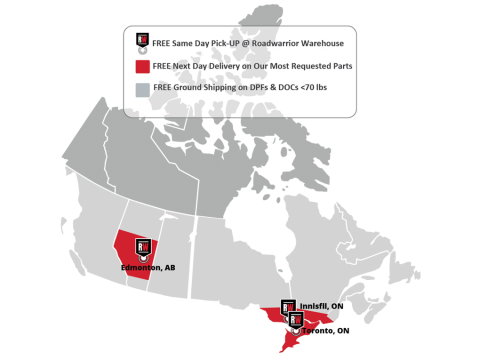What is a NOx Sensor?
NOx sensors are exactly what they sound like—sensors that detect NOx (harmful nitrogen oxide particles) in your truck’s exhaust stream. They’re a small but important part of a diesel aftertreatment system.

What does a NOx sensor do in a commercial truck?
There are two NOx sensors in an HD truck’s aftertreatment system, one on either side of the SCR. The inlet sensor measures the nitrogen oxide (NOx) levels in the exhaust before it passes through the SCR and reports this data to the ECU. Based on this, the ECU determines how much DEF the doser should inject into the exhaust gas. The exhaust then passes through the SCR, which converts the NOx into nitrogen and oxygen, reducing the truck’s emissions. The second sensor sits just after the SCR, measuring the remaining NOx levels in the exhaust. It makes sure the SCR is working properly and alerts the ECU to any performance issues.
What Causes NOx Sensors to Fail?
A sensor has to be highly sensitive to accurately detect NOx levels. The unfortunate downside of this is that they’re delicate and prone to getting damaged or contaminated. As part of the aftertreatment system, the most common reason for a faulty NOx sensor is soot build-up. When the sensor is smothered in soot it gives inaccurate readings, disrupting the ECU and SCR, and causing your truck to throw fault codes. NOx sensors can also be damaged by moisture from the exhaust, or by contact with moisture when you replace them. If you think one of your NOx sensors is malfunctioning, you should also check for cable damage.
How Do You Know If Your NOx Sensors Are Faulty?
The NOx sensors tells the ECU how much DEF should be injected into the exhaust before it enters the SCR. If the sensors are faulty, you’ll likely see increased DEF consumption and fuel spending, alongside erratic or unstable idling. At this point, your truck is likely to throw a fault code, and trigger a warning light on your dashboard. The most common fault codes associated with a bad NOx sensor are SPN 3217 FMI 3 (SCR inlet NOx sensor circuit, failed high), SPN 3217 FMI 5 (SCR inlet NOx sensor circuit, failed open), SPN 3227 FMI 3 (SCR outlet NOx sensor circuit, failed high) and SPN 3227 FMI 5 (SCR outlet NOx sensor circuit, failed open).
Can You Drive with A Bad NOx Sensor?
It’s important to repair or replace a faulty NOx sensor quickly to protect your engine and aftertreatment system. You can drive for a short time with a faulty one, with the engine running rich and over-using DEF, but the ECU will eventually send your truck into limp mode and engine derate.
How Much Does It Cost to Replace a NOx Sensor?
This depends on the OEM, truck model and where you buy from. A new OEM NOx sensor is usually in the range of $450–$750USD, but they can be higher. You can often find a better price with a reputable aftermarket manufacturer, but it’s important to make sure the part meets OEM specifications. If you can’t clean or repair your sensor, buying a new one is much better than driving with a faulty one. There is also the option of buying a cheaper reman sensor, but these have often had their sensor probe swapped and are likely to go wrong again much sooner than you’d like!
Is My NOx Sensor Covered by My Warranty?
The time that OEM warranties cover sensors for varies enormously! When you renew your truck’s warranty, you should make sure this breakable part is covered. If you have to buy a new one, you should also check that the part is covered by a warranty! At Roadwarrior, we stock several varieties of Cummins NOx sensor, as well as replacements for your Volvo Mack, Detroit Diesel or Paccar NOx sensor.
Click here to learn more about Roadwarrior sensors and our hassle-free warranty





